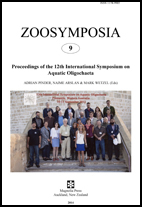Issue:
Vol. 9: 12 June 2014
Type: Article
Published: 2014-06-12
Page range: 44–50
Abstract views: 629
PDF downloaded: 518
Toxicity and bioaccumulation of fluoride ion on Branchiura sowerbyi, Beddard, (Oligochaeta, Tubificidae)
Department of Biology, Padova University, Via U. Bassi 58/A, Italy
Department of Biology, Padova University, Via U. Bassi 58/A, Italy
Department of Biology, Padova University, Via U. Bassi 58/A, Italy
Branchiura sowerbyi
Fluoride ion toxicity
Bioaccumulation
Temperature influence

